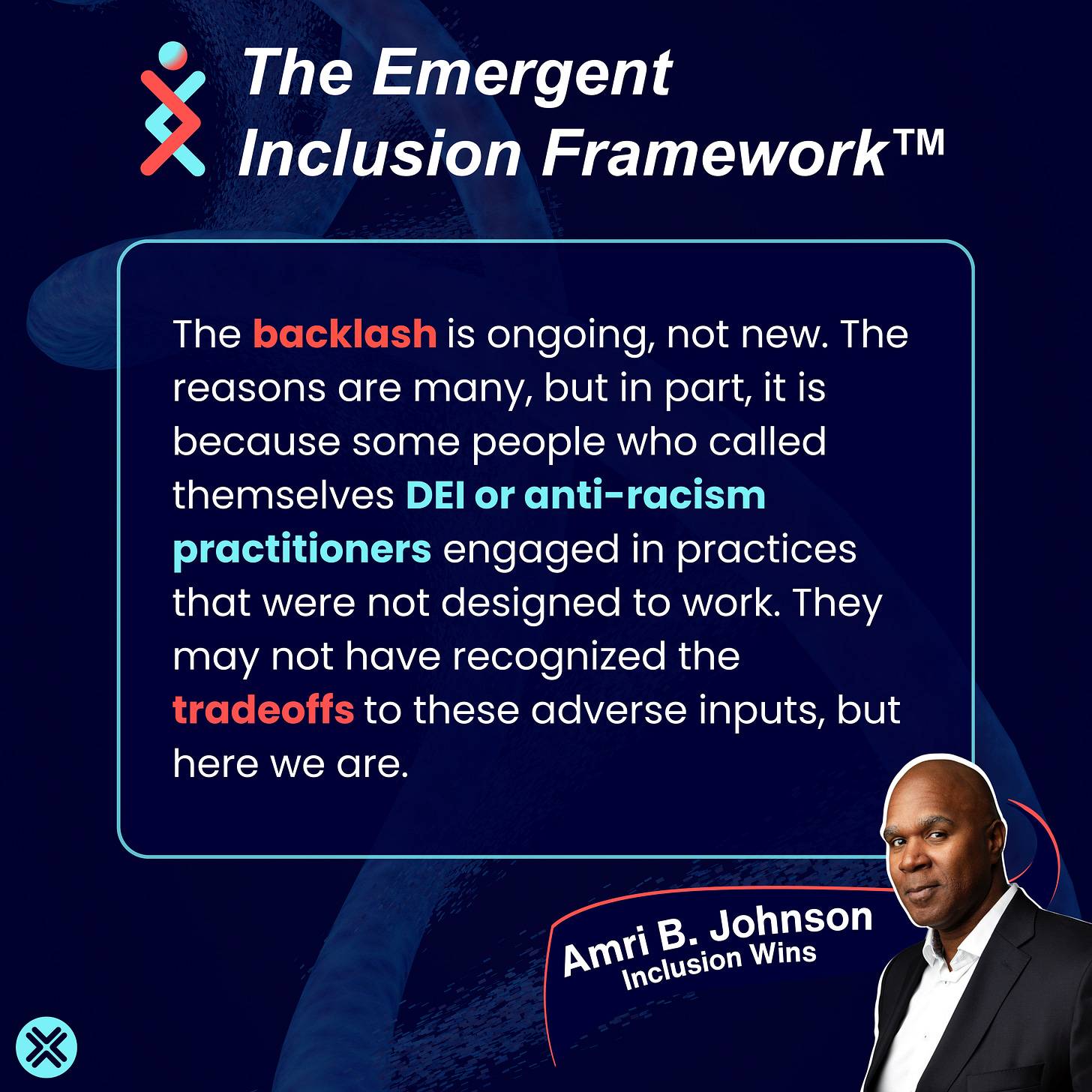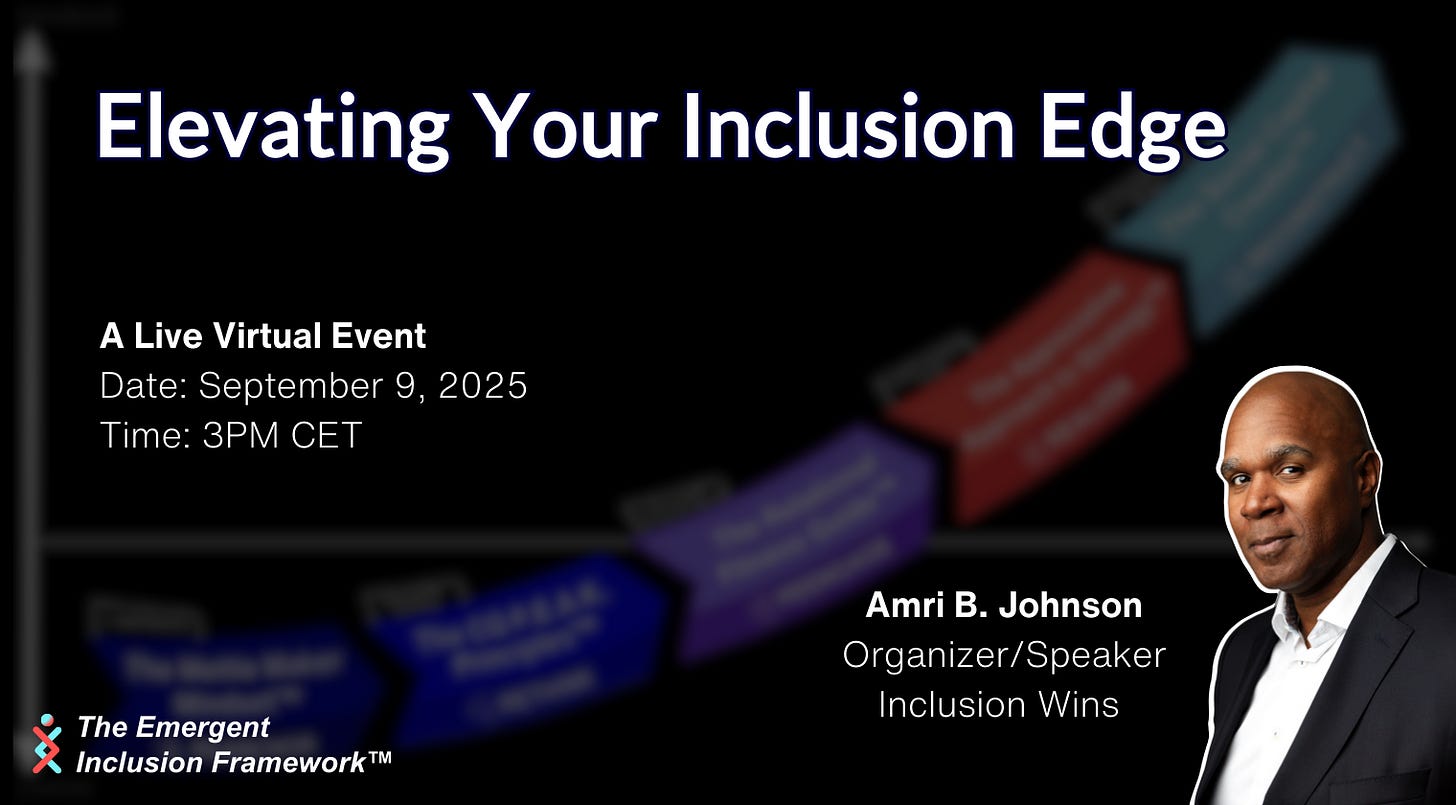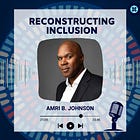The Real Reset: Beyond Binary DEI
DEI, as I frame it, was never about slogans, mandatory training, or demographic box-checking.

At least bi-weekly someone publishes an opinion piece on DEI. Many are written by people who have never done any work related to organizational culture or what can be framed as DEI. Some are reactive, some are partisan, and most of them don’t land with much nuance.
Nuanced articles about DEI rarely go viral so when they are out there, they garner little attention. Disappointingly but expectantly, bombastic statements and standpoints (pro and anti-DEI) rule the day.
Recently, Arthur Brooks wrote in The Atlantic that DEI has been oversold, poorly executed, and politically battered—but also that throwing it out wholesale would be a mistake. Brooks' article didn’t disappoint, particularly because it didn’t present an immovable standpoint.
Brooks argues, and I agree, that DEI needs a reset. It has been needed for years, but the current political zeitgeist has only for the past election cycle utilized it for momentum. But here’s the rub: many folks who read an article like that still default to binary thinking—“DEI is good” or “DEI is bad.” Such a way of thinking has flattened the idea of DEI (or inclusion as I tend to focus on) and flattened the possibilities for what it can positively create in organizational life.
DEI, as I frame it, was never about slogans, mandatory training, or demographic box-checking. For me, inclusion has always meant:
Any action that creates the conditions for thriving.
Accessible to all, unambiguously prioritized, and aligned with organizational mission and strategy.
Mine is not the version under attack. The words related to the acronym, particularly “equity,” might be, but what’s being targeted in the U.S. right now is a caricature called “The DEI”—an orthodoxy co-opted by bad faith actors and rigid practitioners alike.
What’s Really Being Halted?
When Brooks writes about the failure of corporate DEI, he points out that many programs actually reduced representation and increased perceptions of unfairness. That’s true and is backed up by many researchers, the most famous being Alexandra Kalev and Frank Dobbin.
What gets lost in the noise of the so-called DEI discourse, along with clunky training and demographic proxies, is the backlash halting broader, worthwhile efforts. These kinds help organizations build relational muscles, foster curiosity, and prepare for a world where potentially “equalizer tools” like generative and cognitive AI are redefining advantage.
Inclusion and Diversity are not under attack. What’s under attack is the strawman version of it.
A proper reset means embracing:
Relational capability, not checkbox group identity representation.
Heterodox curiosity, not ideological purity.
Deliberative capacity building to create thriving, not binary framing.
Heterodoxy and Depth
Last fall, I wrote that heterodox thinking is intellectual curiosity in action. It’s about being willing to be influenced by the “so-called other,” (one way I define inclusion) not just reinforced by those who agree with us. That requires reflexivity—digesting challenging perspectives and being able to see the degrees of personal authorship in such viewpoints rather than rejecting them outright.
This is where I get blunt: many people who talk about DEI have never engaged with a practitioner of depth. Someone with receipts. Someone who has delivered outcomes their clients would actually call “success”—beyond the perceptions of DEI staff themselves.
Instead, too many voices out there become entrenched in orthodoxy (pro vs. anti-DEI), unwilling to be challenged or sit in the tension that real inclusion requires—it’s a sort of intellectual laziness or convenience that confirms one’s beliefs or lines one’s pockets.
And, this is precisely the space, the point at which DEI can get stronger. As I wrote:
“Heterodoxy and having to dance with the winds of resistance are a gift that catalyzes us to deepen our capacity.”
How should DEI adapt its approach in a region with a significant digital divide?
Aristotle, Confucius, and the Mean
Brooks invokes Aristotle to highlight the value of diversity of acquired attributes—skills, opinions, experiences—as the real engine of innovation. Aristotle would nod at the research showing that cognitively diverse teams outperform homogeneous ones. But he’d also remind us that not every perspective is virtuous; the point is not maximal variety but the right measure.
I am a student of Confucius. So, when I read Brooks’ reference to Aristotle, Confucian teachings came to mind. Writing a century earlier, he gave us the Doctrine of the Mean: harmony as the balance that sustains not just the self, but family, society, and cosmos. Too much ideological sameness produces stagnation. Too much divergence creates chaos. The goal is harmony, flow, and adherence to (or at least aspirations to follow) timeless virtues — not uniformity.
That’s where I land too: the mean, the harmony, the thriving middle path as I talk about in Reconstructing Inclusion in a metaphor of labyrinths:
“I have always been fascinated with labyrinths. I love the complexity of their designs, the sacred geometry, the contextual elegance of their designer(s), and, more uniformly, the structure and purpose of labyrinths.
Unlike mazes, labyrinths have one way in and out of their ending point. They have a single possibility for those who enter to reach the ultimate destination, which lies in the center.
All must enter with the intention of reaching this center point. This center point is not a destination where, once reached, one wins. Rather, it is a destination toward a new beginning. A point that, upon entering, we reflect, we ponder and convey to all who have taken the journey and all who follow what we learned with each turn, each impasse, each step.
As a DEI field, it is time we escape from the conversational networks of contention, the cycles of reincarnation, the cautionary brand, the deadlocks. Our days of pursuing mostly incomplete ideas and ideals, and of not evolving personally or organizationally, need to end. There is a calling to the extraordinary, a calling that spoke for most of us when we began this work, that we need to return to.
This calling to the extraordinary asks us to thoughtfully enter the complexity of the labyrinth we have created. It is a calling that is agnostic to everything (existing beyond our attachments, preferences, traditions, and desires for the elevation of a single idea or identity) and that chooses only humanity.”
Closing Thought
The current political wave against DEI is not a genuine critique of inclusion. It’s a campaign against a caricature. What’s really at stake is whether we’ll build the skills and curiosity needed to thrive in an era where tools can equalize output but never replace human connection.
So don’t anchor on the loudest voices—or the ones that refuse to be challenged. Don’t settle for caricatures, positive or negative. Seek out practitioners and leaders who can hold the tension, who are willing to be influenced by contrary viewpoints, who can call BS on shallow work or opposition to robust principles while deepening the path to thriving.
That’s the real reset.
Ready to transform inclusion from concept to action to being a cultural superpower?
When inclusion becomes "the way we do things around here," it transforms from initiative to being a key part of organizational identity.
Want to be part of this transformation? Join us on September 9th for a free virtual event exploring the Emergent Inclusion Framework. Whether you're a skeptic or champion, your voice matters in this conversation.
I hope this was helpful. . . Make it a great day! ✌🏿










Amri, your definition of inclusion is spot on! Couldn’t agree with you more. IMO, DEIB is neither positive, nor negative. It is mandatory.